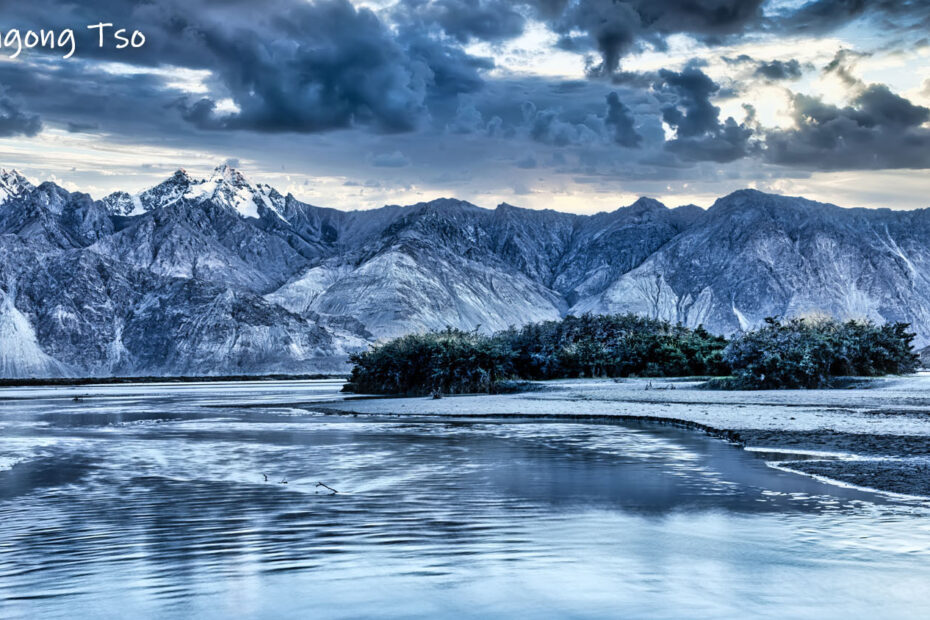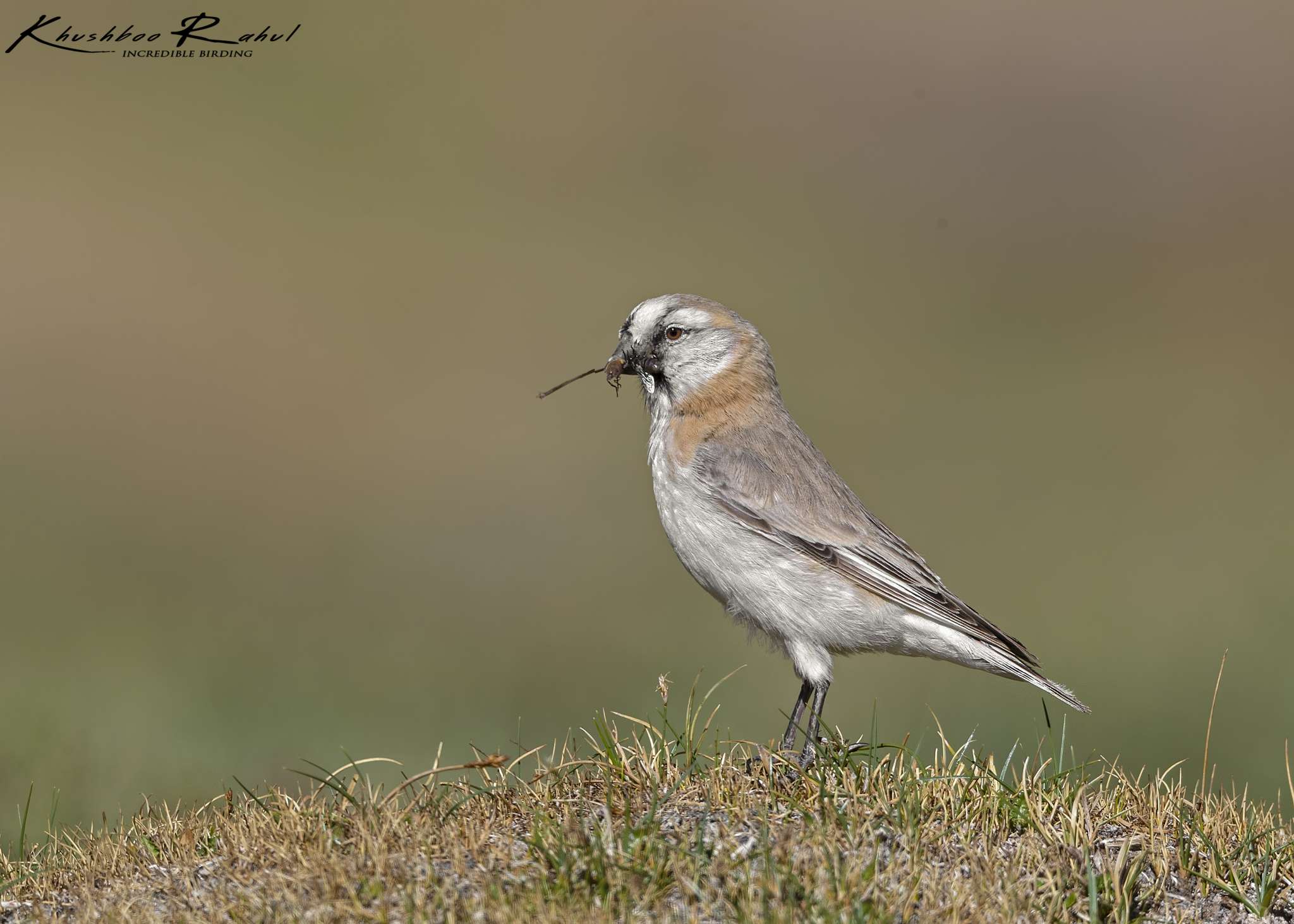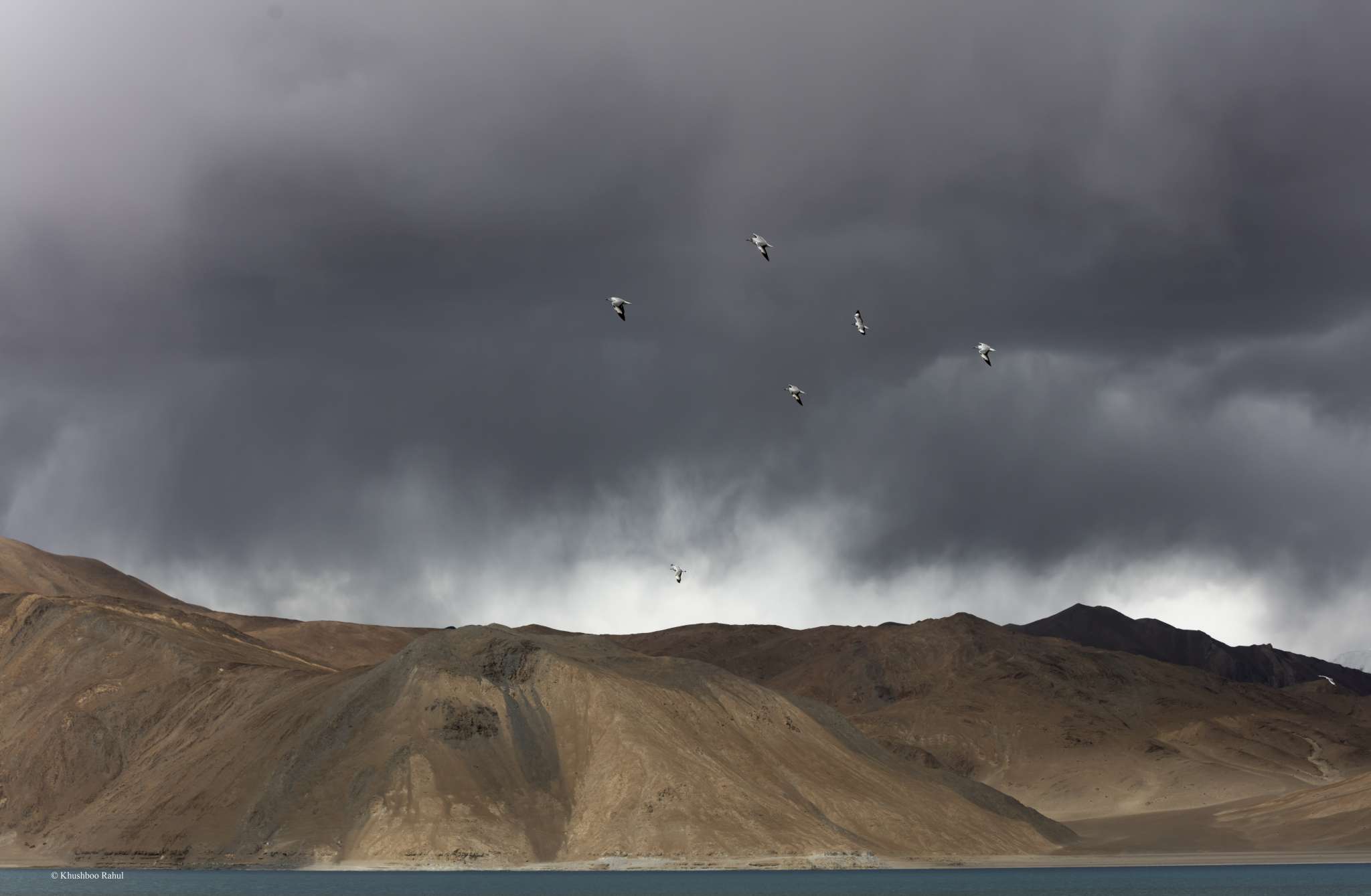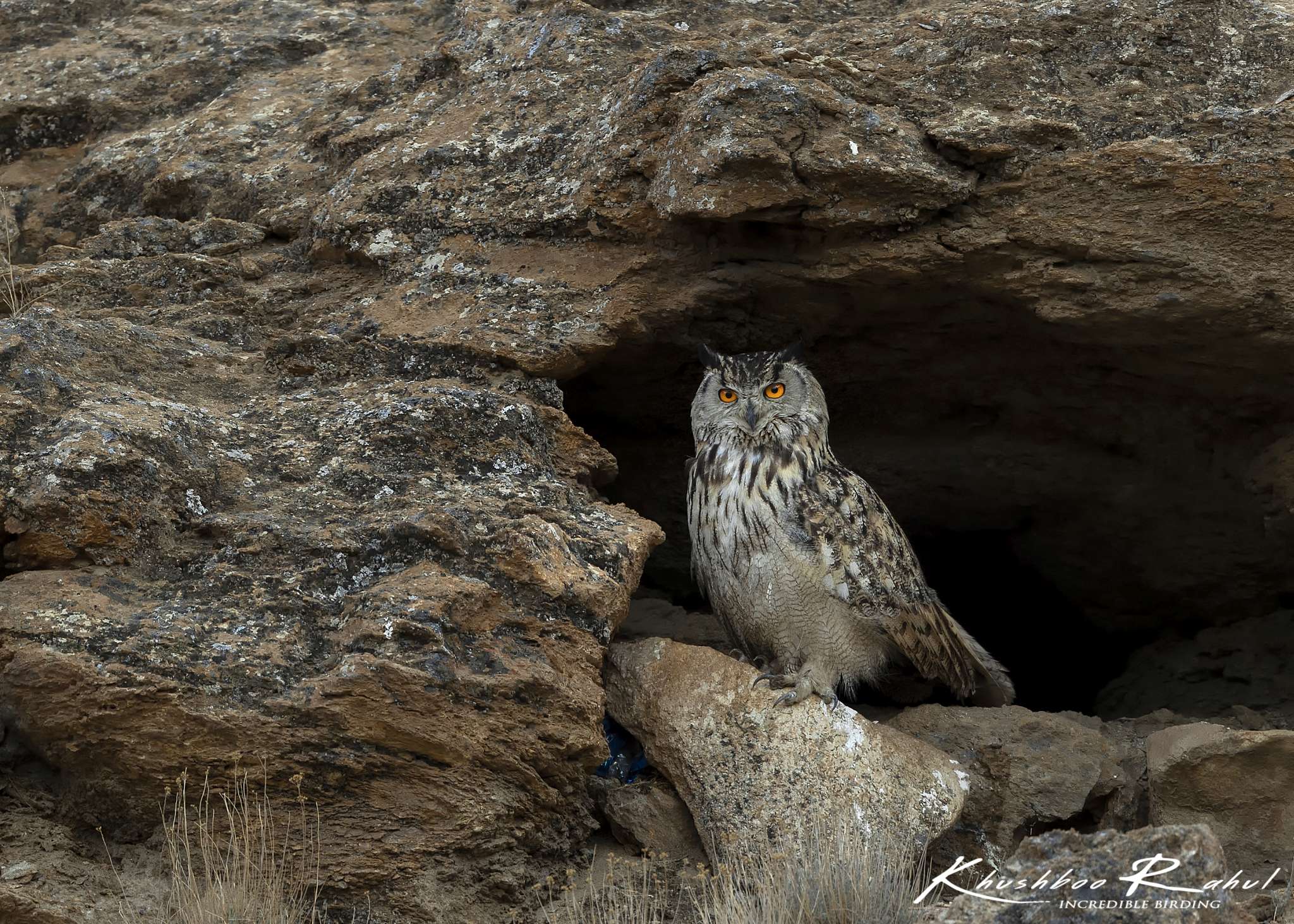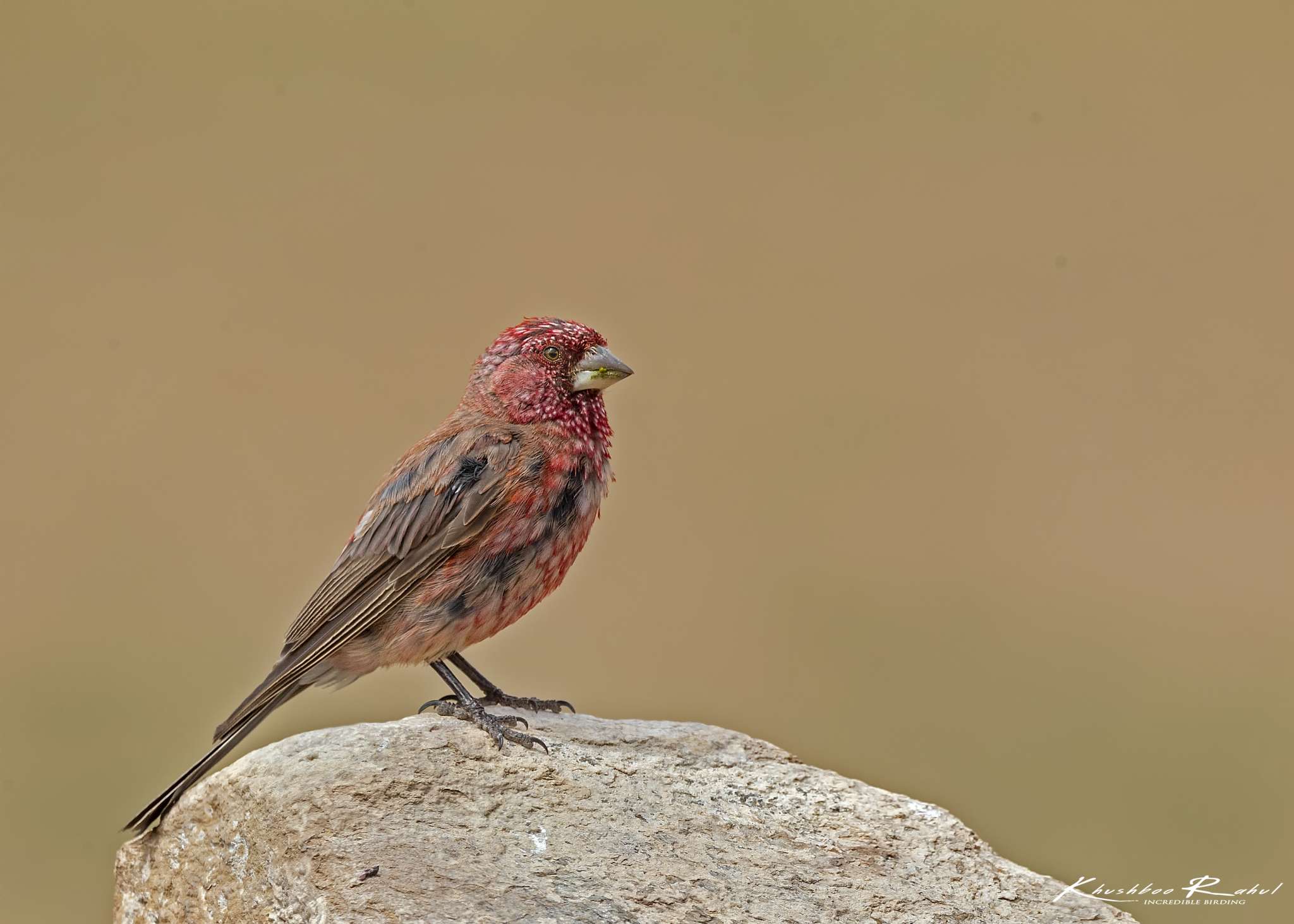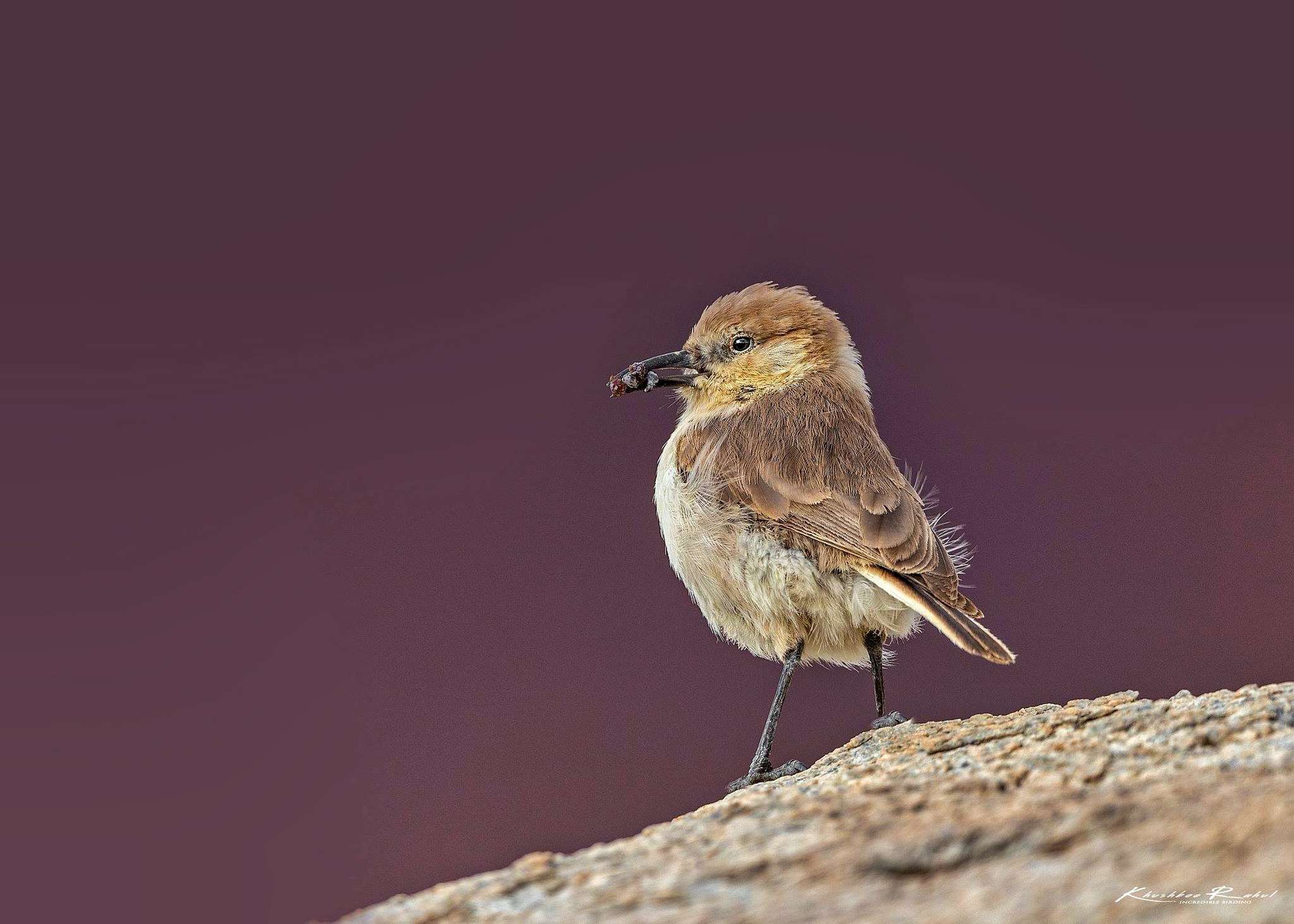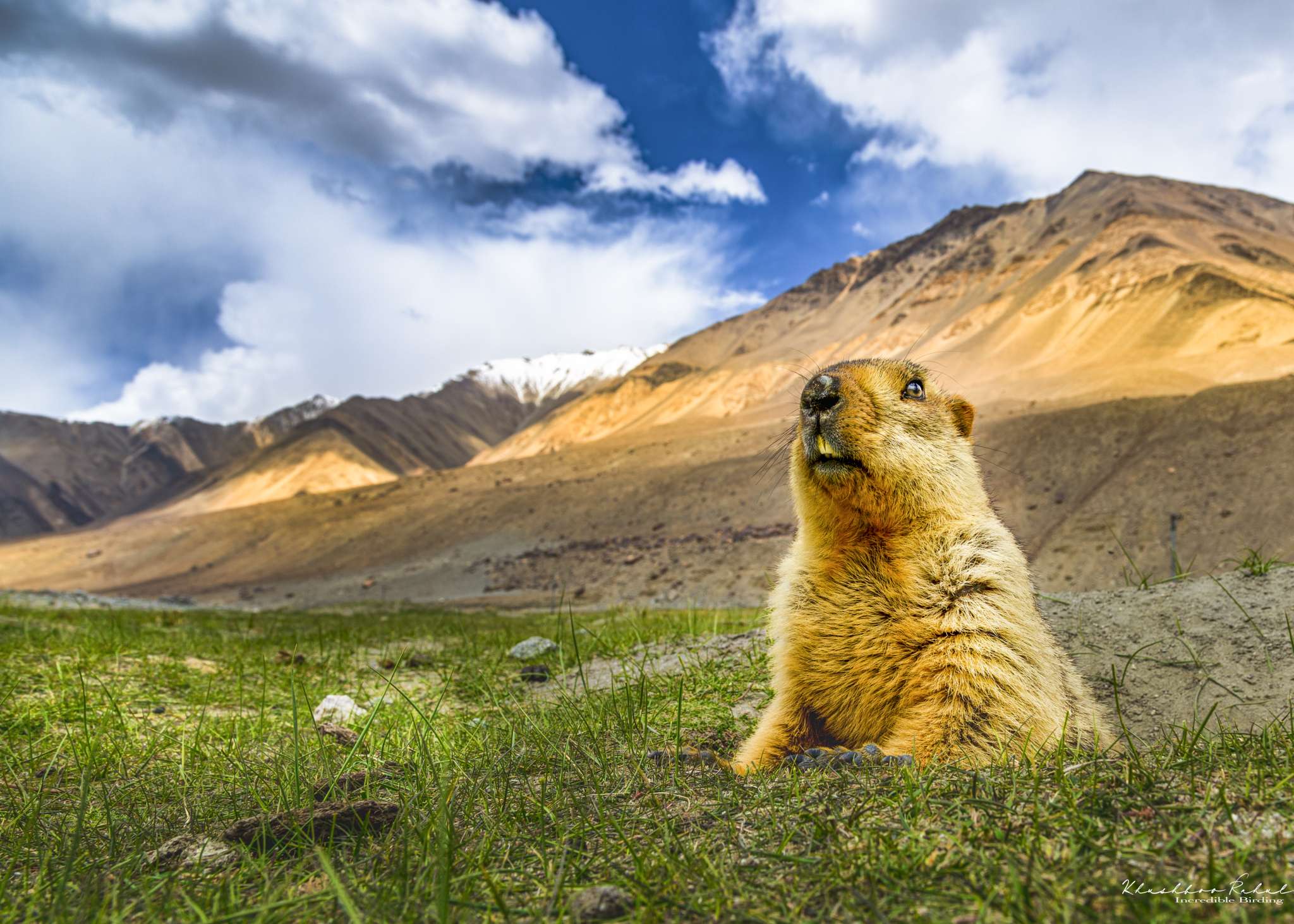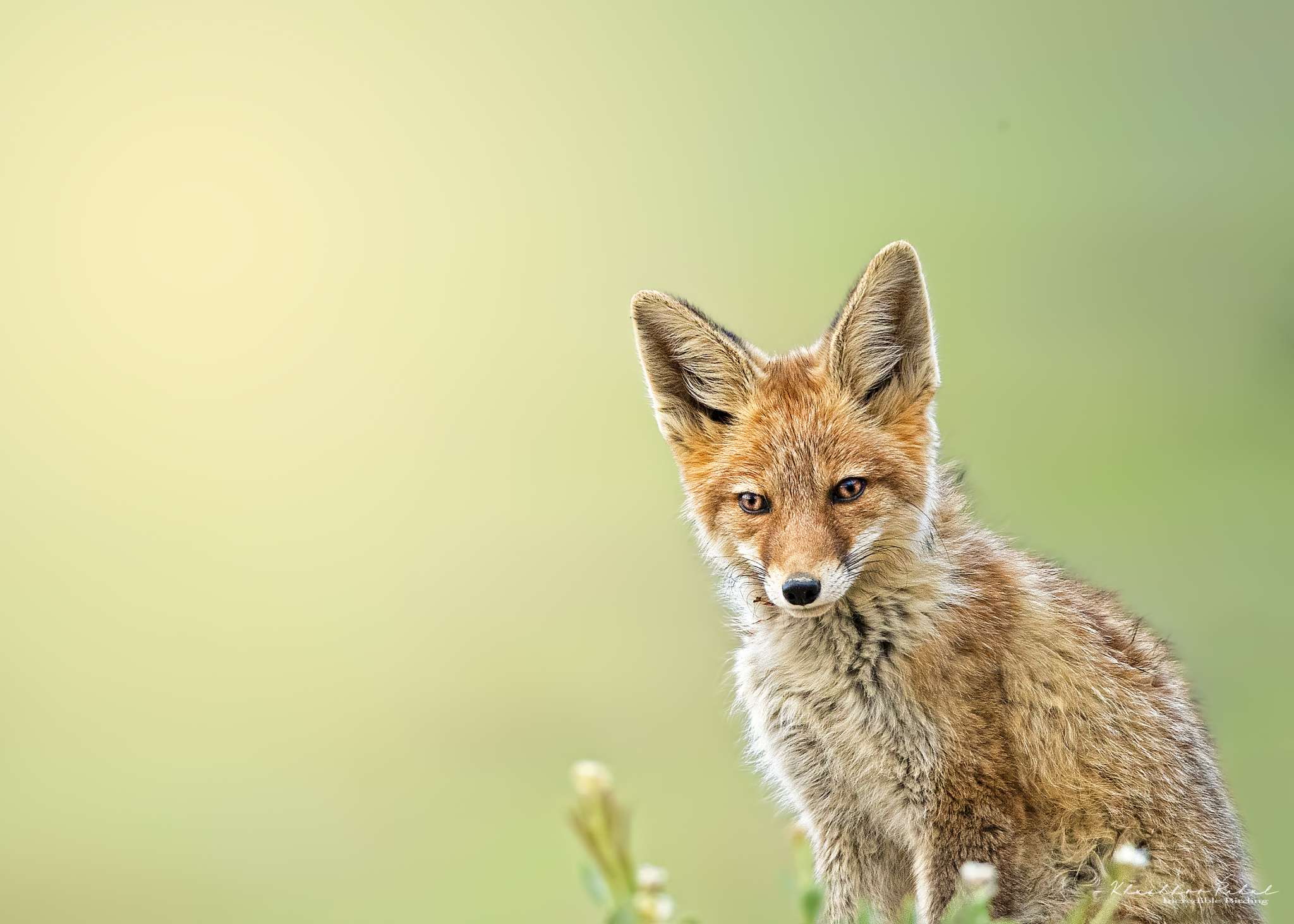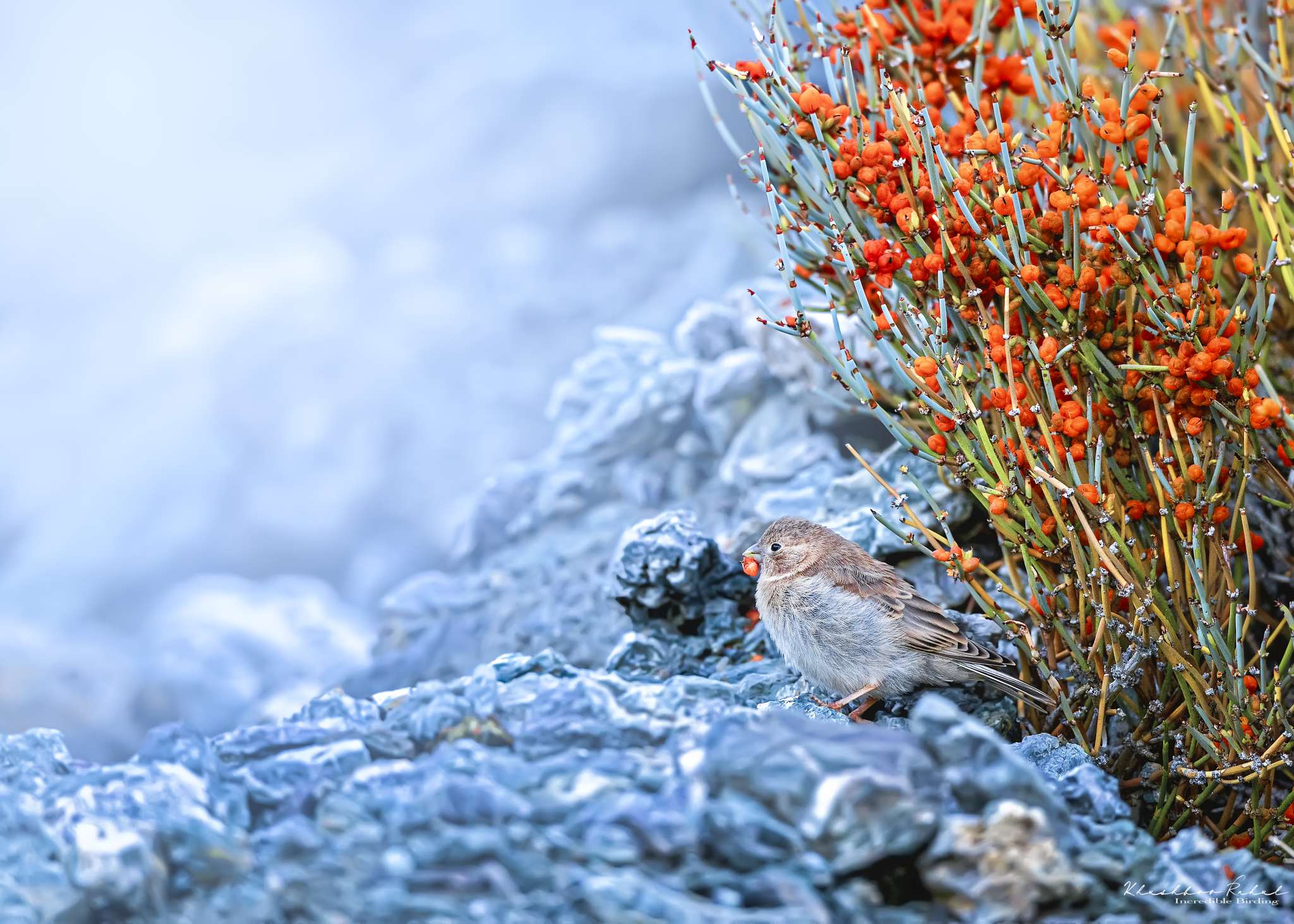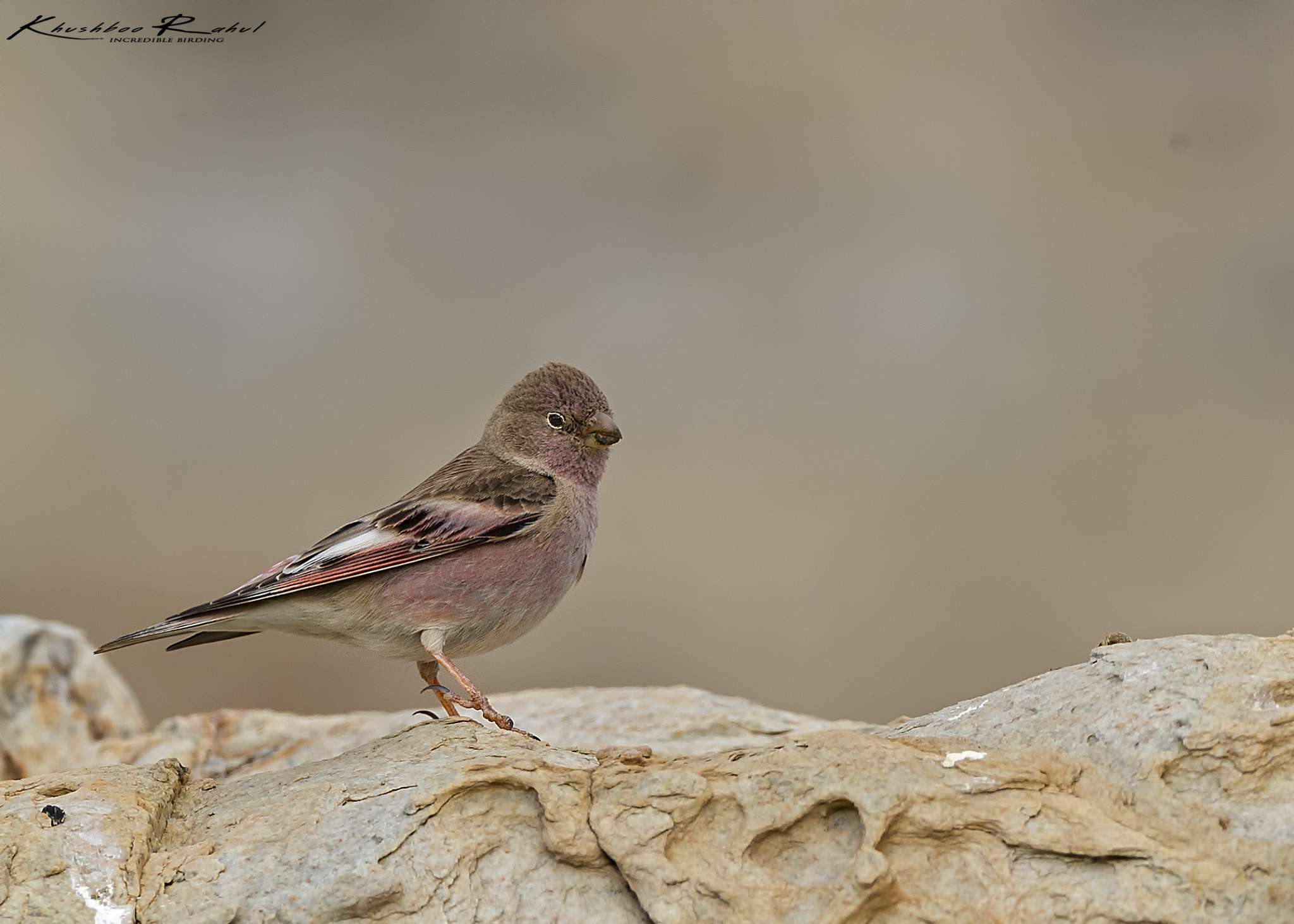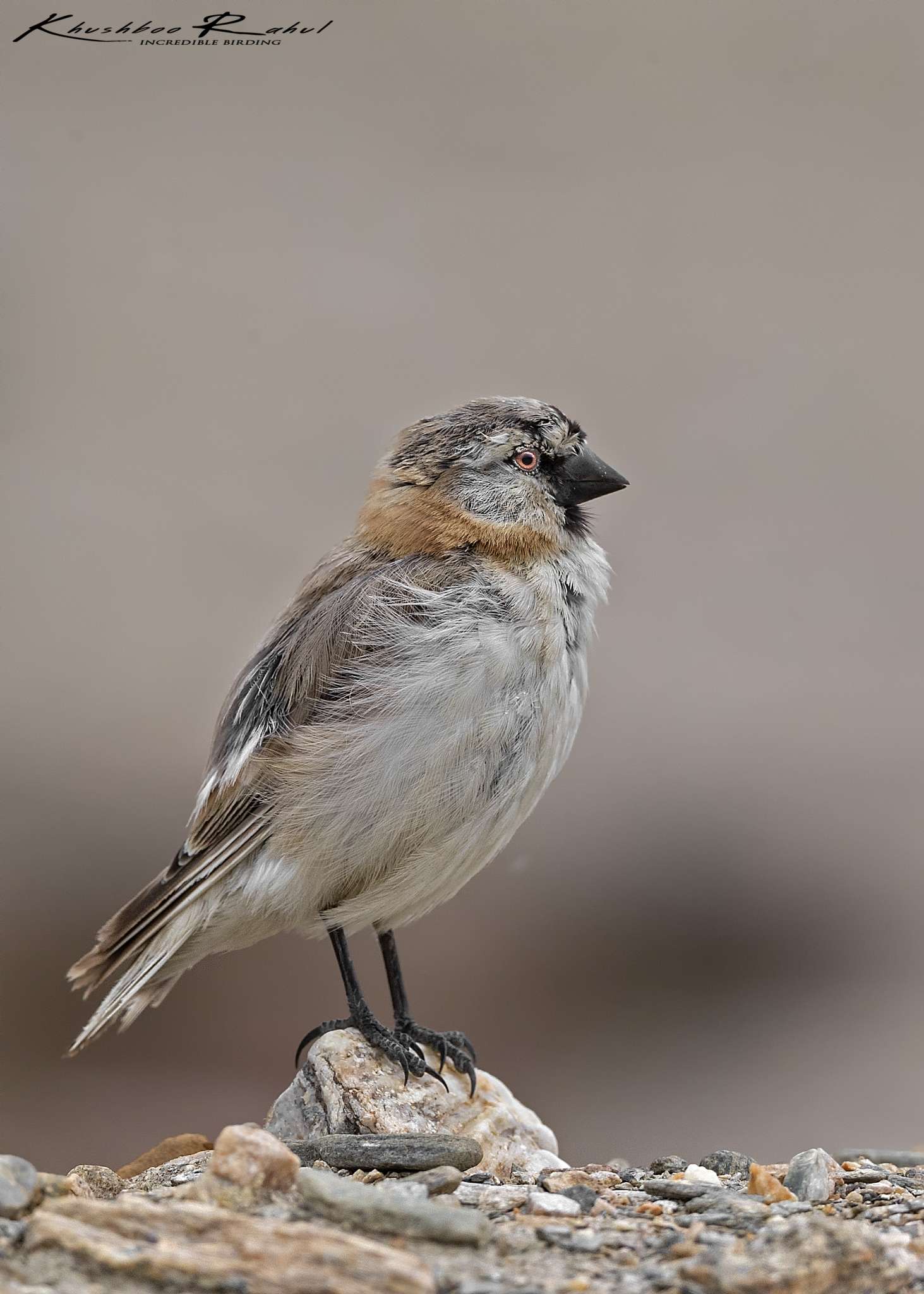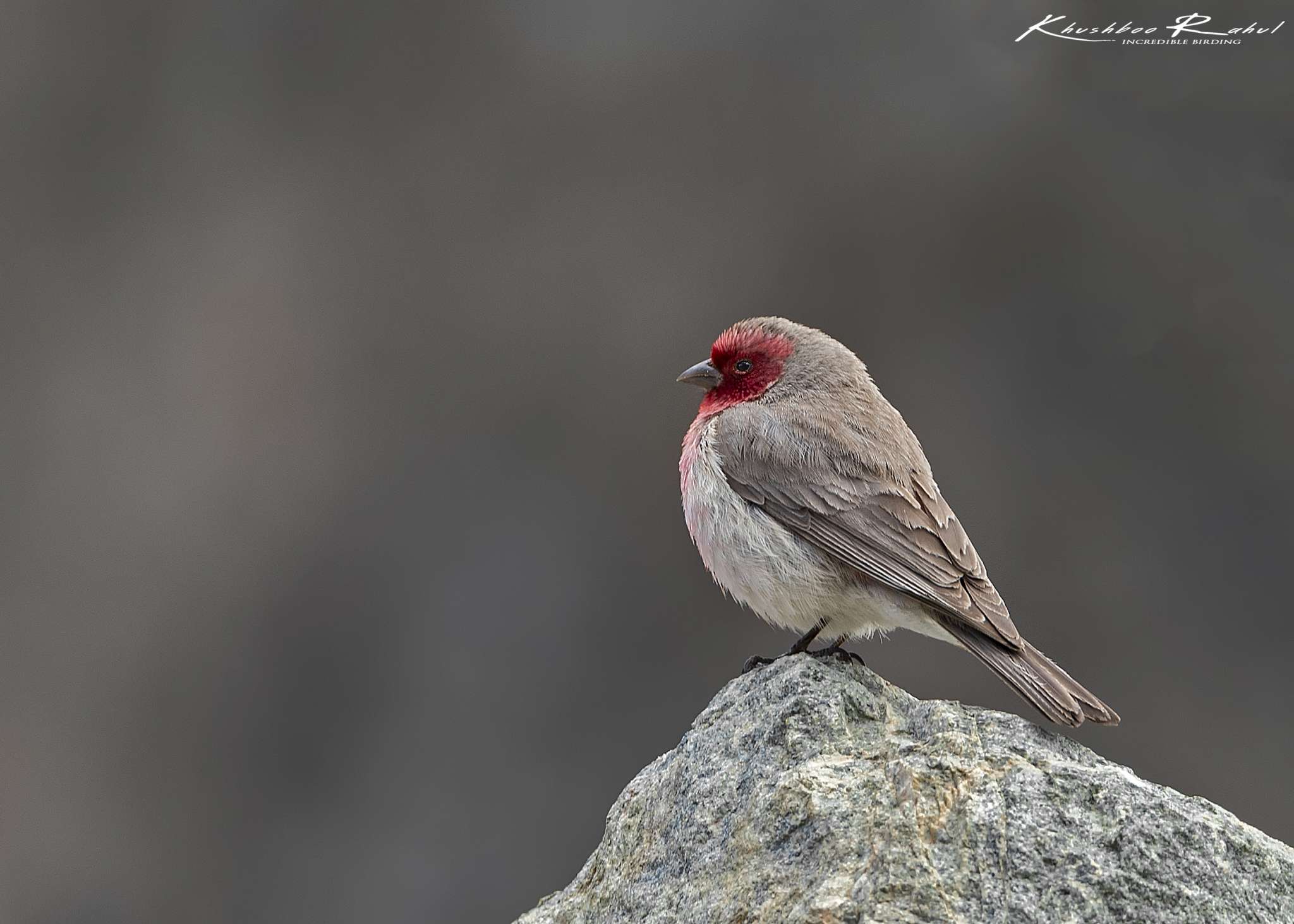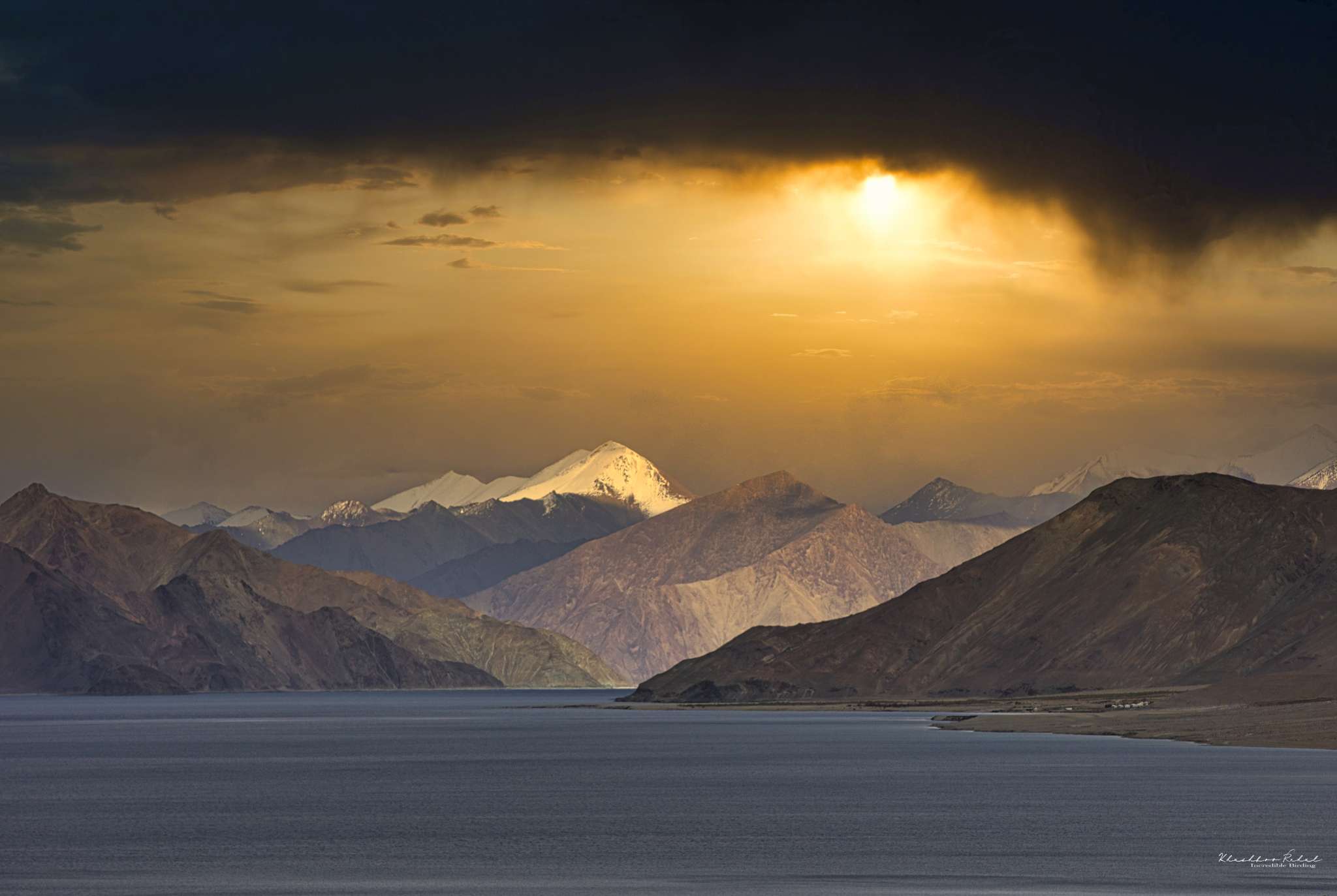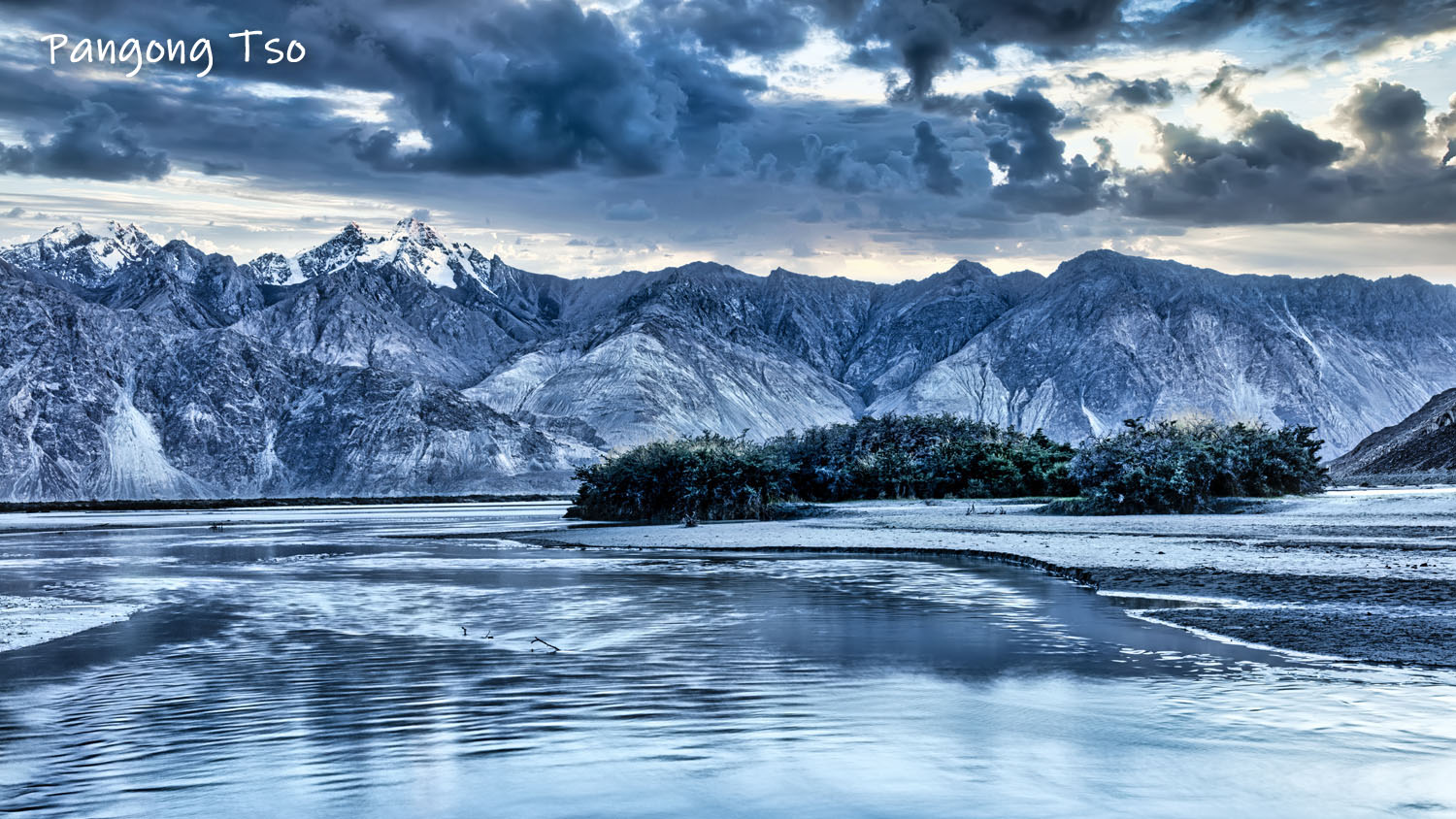
Introduction
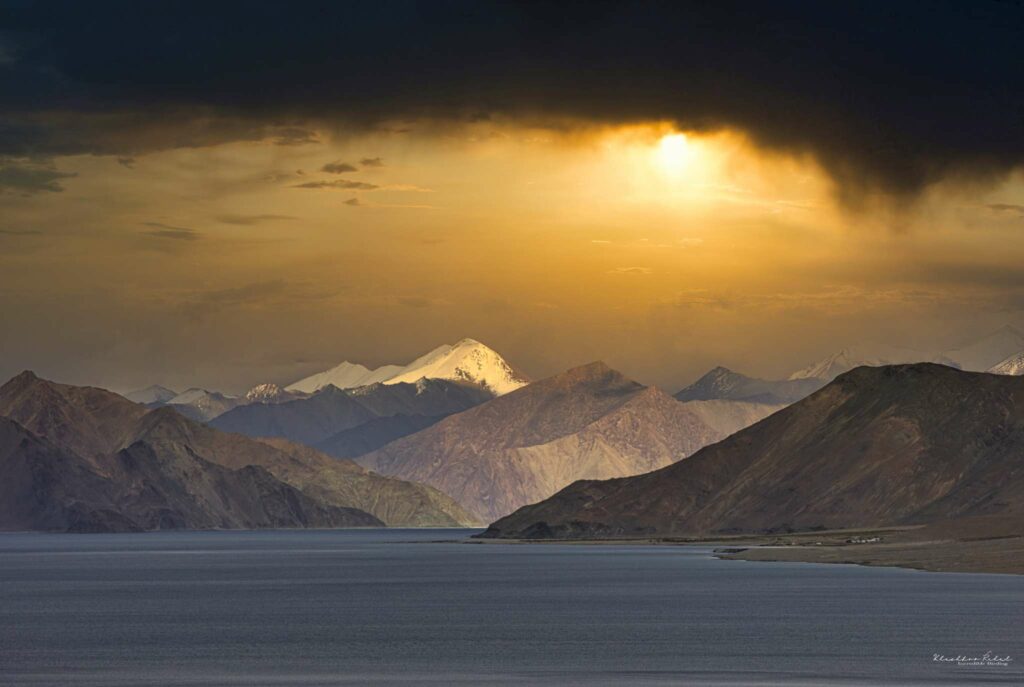
Had you ever imagined that you could explore the avifauna on a birding expedition in the high, rugged mountains of Ladakh? Well, we at Incredible Birding are here to make it a reality. We have discovered some of the best places in the land of high passes to watch and photograph many mesmerizing bird species. Shine your lenses, pack your equipment, insert a new memory card in your camera, and get ready for a unique expedition in the wilderness of Ladakh.
Day 1
Fly from Delhi to Leh. Julley!
Arrive in Leh after a 2.5-3 hour flight and check-in at the hotel. Have lunch and then you have the rest of the day to yourself. You can relax at the hotel or take a stroll through Leh city and browse through the shops in Leh Market for interesting local handicrafts and other paraphernalia. Try out the cafes on Changspa Road or make your way to Leh Palace and get a panoramic view of the city. You can also watch the sunset from the Shanti Stupa as the sky turns vermillion.
We can help you book your flights to and from Leh. A hired cab will pick you up on arrival and take you to the hotel from the airport.
Day 2
Travel to and roam around the outskirts of Leh.
Early bird gets the worm but an even earlier photographer gets to watch it get the worm! Wake up early and head to the outskirts of Leh. Today we will be birding in the Hemis National Park so carry your camera, lenses, and equipment. In the evening, you will get to learn more about the culture of this region as you take part in a culture and portrait photoshoot
Day 3
Travel from Leh to Spangmik via Pangong Tso.
Today will be a happening day as you wake up early, load up your equipment and luggage and head towards Spangmik. You will be having a delicious and healthy packed breakfast on the way before it’s lunch time at Pangong Tso. We will halt at the Shey Marshes just outside Leh as well as at the beaches of Pangong lake for a little bit of birding. Tonight’s stay will be at a hotel in Spangmik.
Total Distance traveled: 170 kms | Travel Time: 6-7 hours | Road Conditions: Mostly Good, Metallic Roads
Day 4
Journey from Spangmik to Hanle via Maan and Chushul.
After having an early breakfast, we drive eastwards along the Pangong Lake via Maan village and Meraks village towards Hanle. We will have lunch on the way as we continue our journey and arrive at Hanle by evening. Overnight stay will be at the hotel in Hanle.
On the way, we will take pit stops for birding where you’ll see waterbirds like the Brown Headed Gull, Black-headed Gull, Terns, Grebes, Desert Wheatears, finches, Accentors, and the Pallas’s Gull. Although a rare occurrence, the Arctic Skua has also been spotted in this region.
Total Distance traveled: 160 kms | Travel Time: 6-8 hours | Road Conditions: Moderate with occasional rough patches
Day 5
Exploring and Birding in and around Hanle.
We will be waking up way before the break of dawn and leaving the hotel by 5 A.M for the Hanle Grounds. We will visit the Stone Mountain Area, the Red Fox site, and the home turf of the Ground Pecker. We will return back to the hotel for breakfast by 9:30 A.M. so that you can get some sleep from 10 A.M. to 1:30 P.M. After having lunch at 2 P.M., we will have a photography session at the Monastery and the Nomadic area. We will plan our activities for the next day during a group discussion between 7:30 P.M. to 8 P.M. followed by dinner.
Day 6
Exploring and Birding in and around Hanle.
Just like the day before, we will take an early morning drive to the Pallas’s Cat Area, Eurasian Eagle Owl Site, and the Nomad Tents Site where you’ll learn about the ancient nomad culture of the people that lived here. Following the same timetable as the previous day, we will have breakfast at 9:30 A.M., rest from 10 A.M. till 1:30 P.M., and lunch at 2 P.M. Then, we will leave for our evening birding session and make way to the Black Neck Crane Sites. We will have a group discussion and do the planning for the next day from 7:30 P.M. till 8 P.M. Dinner will be served after the discussion.
Day 7
Drive to Tsokar via Puga Valley, Polo Kongka La.
Our destination for today will be Tsokar, the high altitude lake situated in southeastern Ladakh. Similar to the past few days, we will begin our day early, have lunch on the way, and arrive at Tsokar by evening.
There are some hot springs in Puga where we will stop to photograph beautiful birds like the Brandt’s mountain finch, Great Rosefinch, Tibetan Snowfinch, Mongolian Snowfinch, Horned Larks, and the Little Owl. You will also come across mammals like Marmots, Tibetian Wild Asses (Kiang) during the journey.
Total Distance traveled: 160 kms | Travel Time: 6-7 hours | Road Conditions: Moderate with rough patches
Day 8
Birding near Tsokar.
After an early morning wake up call, we’ll immediately head out to the Tibetian Argali, Barhal and IBEX area for a birding session. We’ll be back at the hotel for breakfast at 9:30 A.M. and then we’ll get some much needed sleep till lunch at 2 P.M. Post lunch, we’ll set up our equipment at the Tsokar grounds and watch different species of birds and capture them through our enormous camera lenses!
Day 9
Return to base camp at Leh by road.
We have an early breakfast at the hotel, leave from Tsokar and stop for a morning birding session at the Tsokar Plains. We will also stop at the mighty Taglang La on our way to Leh to photograph high altitude birds. After having lunch en route, we will arrive in Leh by evening.
Total Distance traveled: 130 kms | Travel Time: 6-7 hours | Road Conditions: Mostly good
Day 10
Departure from Leh to Delhi. Julley!
After having a fulfilling breakfast at the hotel, a cab will drop you at the airport. Bid adieu to Leh as you board your flight back to Delhi. Julley!
Species Lists of Birds & Mammals of Ladakh
- Snow partridge (Lerwa lerwa)
- Tibetan snowcock (Tetraogallus tibetanus)
- Himalayan snowcock (Tetraogallus himalayensis)
- Chukar partridge (Alectoris chukar)
- Tibetan partridge (Perdix hodgsoniae)
- Common quail (Coturnix coturnix)
- Rain quail (Coturnix coromandelica)
- Greylag goose (Anser anser)
- Bar-headed goose (Anser indicus)
- Brahminy shelduck (Tadorna ferruginea)
- Gadwall (Anas strepera)
- Eurasian wigeon (Anas penelope)
- Mallard (Anas platyrhynchos)
- Northern shoveller (Anas clypeata)
- Garganey (Anas querquedula)
- Common teal (Anas crecca)
- Red-crested pochard (Rhodonessa rufina)
- Common pochard (Aythya ferina)
- Ferruginous pochard (Aythya nyroca)
- Tufted pochard (Aythya fuligula)
- Common merganser (Mergus merganser)
- Eurasian wryneck (Jynx torquilla)
- Large scaly-bellied green woodpecker (Picus squamatus)
- Common hoopoe (Upupa epops)
- European roller (Coracias garrulus)
- Indian roller (Coracias benghalensis)
- Small blue kingfisher (Alcedo atthis)
- Blue-cheeked bee-eater (Merops persicus)
- European bee-eater (Merops apiaster)
- Pied crested cuckoo (Clamator jacobinus)
- Common cuckoo (Cuculus canorus)
- Asian koel (Eudynamys scolopacea)
- Alpine swift (Tachymarptis melba)
- Common swift (Apus apus)
- Pacific swift (Apus pacificus)
- House swift (Apus affinis)
- Pallid scops owl (Otus brucei)
- Eurasian eagle owl (Bubo bubo)
- Little owl (Athene noctua)
- Long-eared owl (Asio otus)
- Short-eared owl (Asio flammeus)
- European nightjar (Caprimulgus europaeus)
- Blue rock pigeon (Columba livia)
- Hill pigeon (Columba rupestris)
- Snow pigeon (Columba leuconota)
- Eastern stock pigeon (Columba eversmanni)
- European turtle dove (Streptopelia turtur)
- Oriental turtle dove (Streptopelia orientalis)
- Laughing dove (Spilopelia senegalensis)
- Spotted dove (Spilopelia chinensis)
- Red collared dove (Streptopelia tranquebarica)
- Eurasian collared dove (Streptopelia decaocto)
- Siberian crane (Grus leucogeranus)
- Demoiselle crane (Grus virgo)
- Black-necked crane (Grus nigricollis)
- Water rail (Rallus aquaticus)
- Corn crake (Crex crex)
- Baillon’s crake (Porzana pusilla)
- Spotted crake (Porzana porzana)
- Common moorhen (Gallinula chloropus)
- Common coot (Fulica atra)
- Tibetan sandgrouse (Syrrhaptes tibetanus)
- Solitary snipe (Gallinago solitaria)
- Pintail snipe (Gallinago stenura)
- Common snipe (Gallinago gallinago)
- Black-tailed godwit (Limosa limosa)
- Whimbrel (Numenius phaeopus)
- Eurasian curlew (Numenius arquata)
- Common redshank (Tringa totanus)
- Marsh sandpiper (Tringa stagnatilis)
- Common greenshank (Tringa nebularia)
- Green sandpiper (Tringa ochropus)
- Wood sandpiper (Tringa glareola)
- Terek sandpiper (Xenus cinereus)
- Common sandpiper (Actitis hypoleucos)
- Little stint (Calidris minuta)
- Temminck’s stint (Calidris temminckii)
- Dunlin (Calidris alpina)
- Ruddy turnstone (Arenaria interpres)
- Curlew sandpiper (Calidris ferruginea)
- Ruff (Philomachus pugnax)
- Red-necked phalarope (Phalaropus lobatus)
- Pheasant-tailed jacana (Hydrophasianus chirurgus)
- Ibisbill (Ibidorhyncha struthersii)
- Black-winged stilt (Himantopus himantopus)
- Pied avocet (Recurvirostra avosetta)
- Pacific golden plover (Pluvialis fulva)
- Grey plover (Pluvialis squatarola)
- Common ringed plover (Charadrius hiaticula)
- Little ringed plover (Charadrius dubius)
- Kentish plover (Charadrius alexandrinus)
- Lesser sand plover (Charadrius mongolus)
- Northern lapwing (Vanellus vanellus)
- Collared pratincole (Glareola pratincola)
- Parasitic jaeger (Stercorarius parasiticus)
- Pallas’s gull (Larus ichthyaetus)
- Brown-headed gull (Larus brunnicephalus)
- Black-headed gull (Larus ridibundus)
- Little gull (Larus minutus)
- Gull-billed tern (Gelochelidon nilotica)
- Common tern (Sterna hirundo)
- Arctic tern (Sterna paradisaea)
- Little tern (Sterna albifrons)
- Whiskered tern (Chlidonias hybridus)
- White-winged black tern (Chlidonias leucopterus)
- Osprey (Pandion haliaetus)
- Oriental honey-buzzard (Pernis ptilorhynchus)
- Black-shouldered kite (Elanus caeruleus)
- Black kite (Milvus migrans)
- Pallas’s fish-eagle (Haliaeetus leucoryphus)
- Bearded vulture (Gypaetus barbatus)
- Egyptian vulture (Neophron percnopterus)
- Himalayan griffon (Gyps himalayensis)
- Cinereous vulture (Aegypius monachus)
- Short-toed snake eagle (Circaetus gallicus)
- Western marsh harrier (Circus aeruginosus)
- Hen harrier (Circus cyaneus)
- Pallid harrier (Circus macrourus)
- Montagu’s harrier (Circus pygargus)
- Eurasian sparrowhawk (Accipiter nisus)
- Northern goshawk (Accipiter gentilis)
- Long-legged buzzard (Buteo rufinus)
- Upland buzzard (Buteo hemilasius)
- Lesser spotted eagle (Clanga pomarina)
- Greater spotted eagle (Clanga clanga)
- Steppe eagle (Aquila nipalensis)
- Golden eagle (Aquila chrysaetos)
- Common kestrel (Falco tinnunculus)
- Merlin (Falco columbarius)
- Eurasian hobby (Falco subbuteo)
- Saker falcon (Falco cherrug)
- Peregrine falcon (Falco peregrinus)
- Little grebe (Tachybaptus ruficollis)
- Great crested grebe (Podiceps cristatus)
- Little egret (Egretta garzetta)
- Grey heron (Ardea cinerea)
- Cattle egret (Bubulcus ibis)
- Little bittern (Ixobrychus minutus)
- Great bittern (Botaurus stellaris)
- Rufous-backed shrike (Lanius schach)
- Southern grey shrike (Lanius meridionalis)
- Black-billed magpie (Pica pica)
- Hume’s groundpecker (Pseudopodoces humilis)
- Red-billed chough (Pyrrhocorax pyrrhocorax)
- Yellow-billed chough (Pyrrhocorax graculus)
- Eurasian jackdaw (Corvus monedula)
- Carrion crow (Corvus corone)
- Common raven (Corvus corax)
- Black drongo (Dicrurus macrocercus)
- White-throated dipper (Cinclus cinclus)
- Brown dipper (Cinclus pallasii)
- Rufous-tailed rock thrush (Monticola saxatilis)
- Blue whistling thrush (Myiophonus caeruleus)
- Eurasian blackbird (Turdus merula)
- Dark-throated thrush (Turdus ruficollis)
- Dusky thrush (Turdus naumanni)
- Sooty flycatcher (Muscicapa sibirica)
- Asian brown flycatcher (Muscicapa dauurica)
- Rusty-tailed flycatcher (Muscicapa ruficauda)
- Red-throated flycatcher (Ficedula parva)
- Himalayan rubythroat (Luscinia pectoralis)
- Bluethroat (Luscinia svecica)
- Rufous-tailed scrub robin (Cercotrichas galactotes)
- Eversmann’s redstart (Phoenicurus erythronotus)
- Blue-capped redstart (Phoenicurus caeruleocephalus)
- Guldenstadt’s redstart (Phoenicurus erythrogaster)
- Blue-fronted redstart (Phoenicurus frontalis)
- White-capped redstart (Chaimarrornis leucocephalus)
- Little forktail (Enicurus scouleri)
- Hume’s wheatear (Oenanthe alboniger)
- Variable wheatear (Oenanthe picata)
- Pied wheatear (Oenanthe pleschanka)
- Desert wheatear (Oenanthe deserti)
- Isabelline wheatear (Oenanthe isabellina)
- Brahminy starling (Sturnus pagodarum)
- Rosy starling (Sturnus roseus)
- Wallcreeper (Tichodroma muraria)
- Bar-tailed treecreeper (Certhia himalayana)
- Winter wren (Troglodytes troglodytes)
- Eurasian penduline tit (Remiz pendulinus)
- Fire-capped tit (Cephalopyrus flammiceps)
- Simla crested tit (Parus rufonuchalis)
- Great tit (Parus major)
- Green-backed tit (Parus monticolus)
- Yellow-browed tit (Sylviparus modestus)
- Plain martin (Riparia paludicola)
- Eurasian crag martin (Hirundo rupestris)
- Common swallow (Hirundo rustica)
- Red-rumped swallow (Hirundo daurica)
- Northern house martin (Delichon urbica)
- Goldcrest (Regulus regulus)
- Stoliczka’s tit-warbler (Leptopoecile sophiae)
- Common chiffchaff (Phylloscopus collybita)
- Mountain chiffchaff (Phylloscopus sindianus)
- Plain leaf-warbler (Phylloscopus neglectus)
- Tickell’s leaf warbler (Phylloscopus affinis)
- Greenish leaf warbler (Phylloscopus trochiloides)
- Large-billed leaf-warbler (Phylloscopus magnirostris)
- Tytler’s leaf-warbler (Phylloscopus tytleri)
- Streaked laughingthrush (Garrulax lineatus)
- Variegated laughingthrush (Garrulax variegatus)
- Garden warbler (Sylvia borin)
- Greater whitethroat (Sylvia communis)
- Eastern calandra-lark (Melanocorypha bimaculata)
- Long-billed calandra-lark (Melanocorypha maxima)
- Greater short-toed lark (Calandrella brachydactyla)
- Hume’s short-toed lark (Calandrella acutirostris)
- Asian short-toed lark (Alaudala cheleensis)
- Horned lark (Eremophila alpestris)
- House sparrow (Passer domesticus)
- Spanish sparrow (Passer hispaniolensis)
- Tibetan snowfinch (Montifringilla adamsi)
- Mandelli’s snowfinch (Pyrgilauda taczanowskii)
- Plain-backed snowfinch (Pyrgilauda blanfordi)
- Forest wagtail (Dendronanthus indicus)
- White wagtail (Motacilla alba)
- Large pied wagtail (Motacilla maderaspatensis)
- Yellow wagtail (Motacilla flava)
- Grey wagtail (Motacilla cinerea)
- Red-throated pipit (Anthus cervinus)
- Rosy pipit (Anthus roseatus)
- Alpine accentor (Prunella collaris)
- Altai accentor (Prunella himalayana)
- Robin accentor (Prunella rubeculoides)
- Siberian accentor (Prunella montanella)
- Brown accentor (Prunella fulvescens)
- Black-throated accentor (Prunella atrogularis)
- Brambling (Fringilla montifringilla)
- Fire-fronted serin (Serinus pusillus)
- Twite (Carduelis flavirostris)
- Eurasian linnet (Carduelis cannabina)
- Hodgson’s mountain finch (Leucosticte nemoricola)
- Black-headed mountain finch (Leucosticte brandti)
- Crimson-winged finch (Rhodopechys sanguinea)
- Mongolian finch (Bucanetes mongolicus)
- Common rosefinch (Carpodacus erythrinus)
- White-browed rosefinch (Carpodacus thura)
- Red-mantled rosefinch (Carpodacus rhodochlamys)
- Streaked great rosefinch (Carpodacus rubicilloides)
- Common great rosefinch (Carpodacus rubicilla)
- Red-fronted rosefinch (Carpodacus puniceus)
- Pine bunting (Emberiza leucocephalus)
- Rock bunting (Emberiza cia)
- Grey-necked bunting (Emberiza buchanani)
- Ortolan bunting (Emberiza hortulana)
- Little bunting (Emberiza pusilla)
- Chestnut bunting (Emberiza rutila)
- Red-headed bunting (Emberiza bruniceps)
- Reed bunting (Emberiza schoeniclus)
- Snow leopard (Uncia uncia)
- Eurasian Lynx (Lynx lynx)
- Pallas’s cat (Otocolobus manul)
- Wolf (Canis lupus)
- Red fox (Vulpes vulpes)
- Tibetan sand fox (Vulpes ferrilata)
- Dhole (Cuon alpinus)
- Brown bear (Ursus arctos)
- Stoat (Mustela erminea)
- Mountain weasel (Mustela altaica)
- Stone marten (Martes foina)
- Eurasian otter (Lutra lutra)
- Kiang (Equus kiang)
- Musk deer (Moschus chrysogaster)
- Yak (Bos grunniens)
- Tibetan gazelle (Procapra picticaudata)
- Tibetan antelope/Chiru (Pantholops hodgsoni)
- Bharal (Pseudois nayaur)
- Ibex (Capra ibex)
- Tibetan argali (Ovis ammon hodgsoni)
- Ladakh urial (Ovis vignei)
- Himalayan marmot (Marmota bobak)
- Long tailed marmot (Marmota caudata)
- Silvery mountain vole (Alticola argentatus)
- Royle’s mountain vole (Alticola stoliczkanus)
- Cape hare (Lepus capensis)
- Wooly hare (Lepus oiostolus)
- Plateau pika (Ochotona curzoniae)
- Ladakh pika (Ochotona ladacensis)
- Nubra pika (Ochotona nubrica)
- Large-eared pika (Ochotona macrotis)
- Royle’s pika (Ochotona roylei)
There is So much to Photograph at Ladakh 'Land Of High Passes', Like
- Finest Landscapes In the world
- Portraits Of Beautiful Ladakhi Faces
- Ladakhi Culture
- Sacred Monasteries and Life Of LAMAs
- High Altitude Lakes
- Nomadic Life
- Habitat from Dry Land To Marshes To Deserted Areas
Per Person Cost For Package
INR 69,999/-
10 Days / 9 Nights
|
Expected Tour Dates
|
Availability Of Seats
|
|---|---|
|
TO BE ANNOUNCED
|
-
|
-
No Of Participants
6 Photographers Plus Non Photographer Family
-
Tour Leader / birding leader / Logistics
Incredible Birding Scout
-
Car Type
Toyota Innovas
Cost Includes
- 3 Scheduled Meals each day
- Tea/Coffee
- All Passes, Permits
- Stay On Double Sharing Basis
- All ROAD Transport as mentioned in the Itinerary
Incredible Birding Tour Scout - All photography permits
Cost Exclusions
- Any Beverage/ Snacks/ Meals other than Scheduled once
- Airfare
- Tips
- Any Medical Issues related Cost Of Any Kind
- Anything Not Mentioned in the Inclusions
- Any Travel Cost Due to Medical Issues
- Extra Charges by Govt for Foreign Visitors If any to be paid extra.
Please Note:
Pre-customisation of the tours are available, Contact team Incredible Birding.


